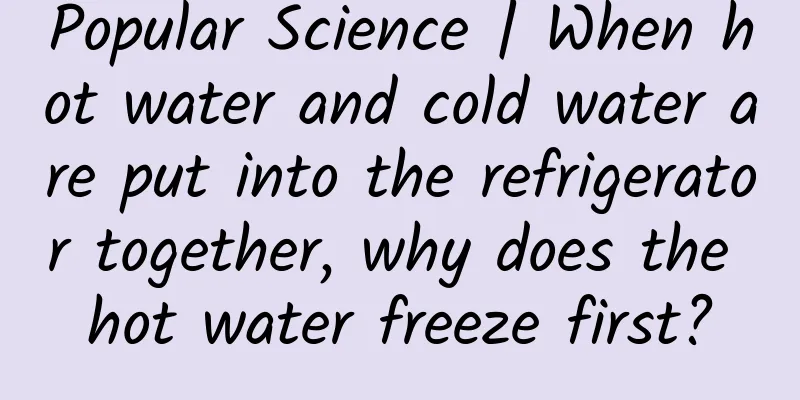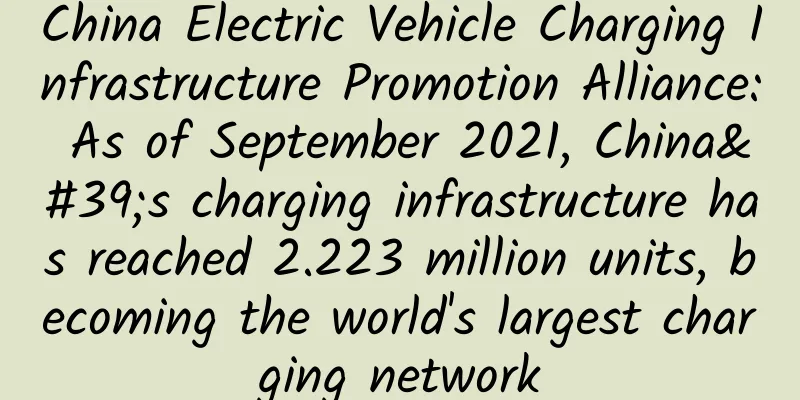Popular Science | When hot water and cold water are put into the refrigerator together, why does the hot water freeze first?

|
If a cup of hot water and a cup of cold water are placed in the refrigerator at the same time, which cup of water will freeze first? In 1963, Erasto Mpemba, a Tanzanian teenager who was still in middle school, made ice cream with his classmates. In order to occupy the limited refrigerator space, Mpemba did not wait for the milk to cool to room temperature like other classmates, but directly put the freshly boiled hot milk into the refrigerator. An hour and a half later, he found that his hot milk had frozen into ice cream, but the cold milk put into the refrigerator with the hot milk was still in the form of thick milk paste. How could hot milk freeze faster than cold milk? Mpemba was very confused and asked his middle school physics teacher, but was told: "You must be wrong, that can't happen." Mpemba kept this question in mind until physicist Dennis Osborne came to Mpemba's high school to audit a physics course. Osborne always remembered that the teenager raised his hand and asked, "If you take two beakers and put equal amounts of water in each, but one beaker is 35°C and the other is 100°C. Then put the two beakers of water in the refrigerator together, you will find that the 100°C beaker freezes first. Why is that?" Osborne did not believe it at first, but out of curiosity, he did an experiment. Osborne then invited Mpemba to the University of Dar es Salaam in Tanzania to jointly study this phenomenon and named it the "Mpemba Effect." In 1969, an article written by Mpemba and Osborn was published in the British magazine "Physics Teacher". The article made a detailed experimental record of "Mpemba's Physics Problem" and made the first tentative explanation of the cause of the problem. They conducted a series of experiments. The experimental equipment was a borosilicate glass beaker with a diameter of 4.5 cm and a volume of 100 ml, which contained 70 ml of boiling water of various temperatures. Through quantitative analysis of the experimental results, the following conclusions were drawn: cooling mainly depends on the surface of the liquid; the cooling rate is determined by the temperature of the liquid surface rather than its overall average temperature; the convection inside the liquid keeps the liquid surface temperature higher than the body temperature (assuming the temperature is higher than 4°C); even if the two cups of liquid are cooled to the same average temperature, the originally hot system will still lose much more heat than the originally cold system; the liquid must go through a series of transition temperatures before freezing, so it is obviously not enough to use a single temperature to describe the state of the system, and it also depends on the temperature gradient of the initial conditions. The problem is more complicated than imagined Later, many people also did a lot of experiments and research in this area, and people found that this seemingly simple problem is actually much more complicated than we imagined. It is a genuine "multivariable problem." (1) Physical reasons From a physical point of view, there are four coexisting mechanisms for cooling: radiation, conduction, vaporization, and convection. Through experimental observation and comparison of the results, it is found that the reason why hot water freezes before cold water is mainly the combined effect of the interaction of conduction, vaporization, and convection. If the process of hot water and cold water freezing is described and the reasons are analyzed, it will be more illustrative: a cup containing cold water with an initial temperature of 4°C takes a long time to freeze, because water and glass are both materials with poor heat conduction, and it is difficult for the heat inside the liquid to be effectively transferred to the surface by conduction. Nikola Bregovic, a Croatian researcher at the Department of Chemistry at the University of Zagreb, believes that convection is the driving force to explain the Mpemba effect - convection in warm water makes the heat evenly distributed. As the temperature of the water in the cup drops, its volume expands, its density decreases, and it gathers on the surface. Therefore, the water freezes first on the surface, followed by extending to the bottom and the surroundings, and then forming a closed "ice shell". At this time, the inner layer of water is isolated from the outside air and can only rely on conduction and radiation to dissipate heat, so the cooling rate is very small, which prevents or delays the normal process of the inner layer of water temperature continuing to drop. In addition, since water expands when it freezes, the "ice shell" that has already formed also has a certain restraining or inhibitory effect on further freezing. The cup containing hot water with an initial temperature of 100℃ takes much less time to freeze. The phenomenon seen is that the ice layer on the surface can never form an ice cap, and the formation of an "ice shell" cannot be seen. Only needle-shaped ice crystals grow into the liquid along the interface of ice and water (this phenomenon cannot be seen when the initial temperature is lower than 12℃). As time goes by, the ice crystals become thicker. This is because the hot water with a high initial temperature has a higher density after cooling, and the upper water flows downward, forming convection inside the liquid, causing water molecules to freeze around their respective "crystallization centers". The higher the initial temperature, the more intense the convection, and the greater the energy loss. It is this convection that makes it difficult for the upper water to form an ice cap. Due to heat transfer and latent heat of phase change, the internal energy loss per unit time is large, and the cooling rate is large. When the water surface temperature drops below 0℃ and is sufficiently low, ice crystals begin to appear on the water surface. The water with a higher initial temperature has a faster growth rate of ice crystals. This is because the ice sheet has not formed and the convection is intense. Finally, it can be observed that the ice sheet is still formed, and the cooling rate has become a little slower. However, because the ice crystals inside the water have grown and become coarse, they have a larger surface energy. The growth rate of ice crystals is proportional to the unit surface energy, so the growth rate is still much faster than that of water with a lower initial temperature. . (2) Chemical reasons Physicists at Nanyang Technological University in Singapore have discovered that the cause of the Mpemba effect lies in the chemical bonds between water molecules. A water molecule has one oxygen atom and two hydrogen atoms, which are covalently bonded. Water molecules are also bound to other water molecules through weaker hydrogen bonds. This occurs when a hydrogen atom is close to the oxygen atom of another water molecule. It is believed that these weaker hydrogen bonds are the root cause of the Mpemba effect. Changes in Chemical Bonds Between Cold and Warm Water As you can see in the picture above, before the water is heated, the water molecules are packed tightly together and "push" each other. The hydrogen covalent bonds of each water molecule are stretched, allowing them to store energy. When the water is heated, the density of the water decreases and the water molecules begin to separate. This causes the weaker hydrogen bonds between the molecules to stretch. This stretching, or the separation between the water molecules, allows the covalent bonds to relax and release energy. Just as the formation of raindrops requires "condensation nuclei", for water to freeze into ice, there needs to be many "crystallization centers" in the water. Biological experiments have found that microorganisms in water are often crystallization centers. Some microorganisms reproduce faster in hot water (water temperature is slightly below 100°C) than in cold water. As a result, there are many more "crystallization centers" in hot water than in cold water, which accelerates the synergistic effect of hot water freezing: daughter crystals grow around the "crystallization centers", which are the nuclei of epitaxial crystallization. Convection causes molecules of various orientations to flow through the daughter crystals, relying on the molecular forces on the surface of the crystals to grab water molecules of appropriate orientations and epitaxially grow many crystal grains with orderly molecular arrangements, suspended in the water. The energy released by crystallization is released through convection, and adjacent ice particles are connected to form ice until all the water is frozen. The above are some conclusions and explanations drawn by scientists through a comprehensive analysis of the observed phenomena. However, further exploration is needed to truly solve the mystery of the "Mpemba Problem" and make a comprehensive, quantitative and satisfactory conclusion about it. Some scholars now propose to use potassium permanganate as a liquid tracer and a double-layer electrified glass observation window for further observation. Interested readers may wish to give it a try. Perhaps you will be the one to uncover this mystery that has lasted for more than 20 years. (Statement: This article is from 21CN Youth Science and Technology Innovation. It is reproduced for learning and communication only, not for commercial purposes. All reproduced articles will indicate the source. If the original author of the article or photo has any objection, please contact us in the background and we will quickly process or delete it. Thank you for your support.) |
<<: Professor Zhu Huadong | Race for life, pre-hospital emergency care to maintain life
>>: Why can he be a scientist but I can't? Because he can find a difference of 0.0064
Recommend
Information flow advertising optimization driven by data monitoring!
In future advertising , the selection of informat...
A "tea-making party" that ignites your taste buds may quietly poison you
Your browser does not support the video tag What ...
Pinduoduo’s 5 high-conversion marketing strategies!
Pinduoduo , a new internet celebrity and a three-...
Google App Ads campaign, ad placement!
In August, Google officially released the latest ...
From the perspective of player needs, how can RPG mobile games design excellent social systems?
[[143177]] Let me make it clear before I say that...
Pressure valve frozen! Countdown stuck at -40 seconds, SpaceX "Starship" launch plan delayed
At about 8:10 a.m. Central Time on April 17, Spac...
Nokia Super LTE network: Download 5GB movie in just 11 seconds
Foreign media reported that Nokia is testing a sup...
Internet TV market is about to change as new products are launched
Recently, Damai Technology said that the first ba...
Where is the Mini? Xiaomi Router Mini Review
Regarding smart routers, although Xiaomi is not th...
Mercedes-Benz new E-class starts at RMB 422,800
The 2016 Guangzhou Auto Show has kicked off. Merc...
These strange "pretenders" around us are actually very useful
The weather is getting cooler, and it is a good t...
Are there dragons in your hometown? Maybe there are no dragons in the world...
There are no dragons in this world. Because the C...
Last night, their story went viral!
Last night (3rd) "2021 China Moved People&qu...
[Live] Aihui Lu from Zego Technology: How to use Zego SDK to instantly build a real-time voice and video APP
[Original article from 51CTO.com] Online video li...
5 ways to attract traffic for Douyin operations
Now many businesses know that they need to use Do...









